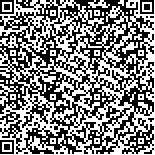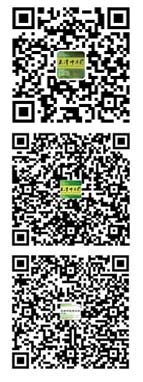|
|
| |
|
|
| 本文已被:浏览 871次 下载 406次 |

码上扫一扫! |
|
|
| 基于网络药理学探讨清感秋饮防治咽炎的作用和机制 |
|
卢佳1,2,3, 苏瑞1,2,3, 闫慧敏1,2,3, 晏一淇1,2,3, 苗琳1,2,3, 张晗1,2,3
|
|
1.天津中医药大学中医药研究院, 天津 301617;2.天津中医药大学组分中药国家重点实验室, 天津 301617;3.天津中医药大学方剂学教育部重点实验室, 天津 301617
|
|
| 摘要: |
| [目的] 探究清感秋饮(QGQY)防治咽炎的作用和可能的机制。[方法] 网络药理学方面,借助中药系统药理学数据库与分析平台(TCMSP)和中医药证候关联数据库(SymMap)筛选QGQY的活性成分,通过TCMSP数据库检索与活性成分相关的作用靶点;通过人类基因数据库(GeneCards)和基因-疾病关联数据库(DisGeNET)获取咽炎相关靶点;取QGQY和咽炎靶点交集,构建蛋白相互作用(PPI)网络,利用注释可视化和集成发现数据库(DAVID)进行基因本体论(GO)功能富集分析和京都基因与基因组百科全书(KEGG)通路富集分析,预测QGQY抑制咽炎可能的作用靶点和信号通路。实验研究方面,以脂多糖(LPS)诱导的人单核细胞THP-1和小鼠巨噬细胞RAW264.7为炎症细胞模型,用实时荧光定量聚合酶链式反应(PCR)法检测QGQY对LPS诱导的THP-1细胞中炎症因子表达的影响;用一氧化氮(NO)试剂盒检测QGQY对LPS诱导的RAW264.7细胞NO释放的影响;通过双荧光素酶报告系统评价QGQY对炎症通路核因子κB(NF-κB)启动子活性的影响。[结果] 网络药理学方法共筛选得到QGQY的活性成分191个,对应靶点276个;咽炎相关靶点562个,成分靶点与疾病靶点取交集共获得靶点59个;构建PPI网络,经拓扑及聚类分析后获得QGQY抑制咽炎的关键靶点包括信号传导及转录激活蛋白3(STAT3)、肿瘤坏死因子(TNF)、白细胞介素-6(IL-6)、白细胞介素-1β(IL-1β)、白细胞介素-10(IL-10)、干扰素诱导蛋白-10(IP-10)等,功能富集分析涉及生物过程、细胞组分、分子功能的GO条目共372个,主要参与药物反应、细胞凋亡、细胞外间隙、酶结合、细胞因子活性等方面,KEGG富集通路得到85条,主要包括TNF、缺氧诱导因子-1(HIF-1)、T细胞受体、NF-κB等炎症信号通路。细胞实验结果显示,QGQY可以显著降低LPS诱导的THP-1细胞中炎症因子TNF-α、IL-1β、IL-6、核因子κB抑制蛋白α(IKBα)和IP-10的表达以及RAW264.7细胞中NO的生成,还可以抑制TNF-α诱导的NF-κB启动子的活性。[结论] QGQY通过多成分、多靶点、多途径方式抑制咽炎的发生发展,并具有显著的抗炎作用。 |
| 关键词: 咽炎 炎症 清感秋饮 单核巨噬细胞 网络药理学 |
| DOI:10.11656/j.issn.1672-1519.2022.10.17 |
| 分类号:R766.14 |
| 基金项目:天津市中医药重点领域科研项目(202003);天津市科技计划项目(20ZYJDJC00070)。 |
|
| Study on the effect and mechanism of Qinggan Qiuyin Formula in the prevention of pharyngitis based on network pharmacology |
|
LU Jia1,2,3, SU Rui1,2,3, YAN Huimin1,2,3, YAN Yiqi1,2,3, MIAO Lin1,2,3, ZHANG Han1,2,3
|
|
1.Institute of Traditional Chinese Medicine, Tianjin University of Traditional Chinese Medicine, Tianjin 301617, China;2.State Key Laboratory of Component Chinese Medicine, Tianjin University of Traditional Chinese Medicine, Tianjin 301617 China;3.Key Laboratory of Pharmacology of Traditional Chinese Medical Formula of Ministry of Education, Tianjin University of Traditional Chinese Medicine, Tianjin 301617, China
|
| Abstract: |
| [Objective] To investigate the effect and mechanism of Qinggan Qiuyin (QGQY) for the prevention and treatment of pharyngitis.[Method]For the network pharmacological research,active ingredients in QGQY was collected through screening from the traditional chinese medicine systems pharmacology database and analysis platform (TCMSP) and symptom mapping database (SymMap),and target information of the active ingredients from QGQY were then obtained from TCMSP database.Pharyngitis related targets were obtained through the Human Gene database (GeneCards) and a database of gene-disease associations (DisGeNET).The intersection of QGQY and pharyngitis targets was taken to construct Protein-Protein Interaction networks (PPI),and Gene Ontology (GO) and Kyoto Encyclopedia of Genes and Genomes (KEGG) signaling pathway enrichment analysis were further performed to figure out the related targets by the database for annotation visualization and integrated discovery (DAVID).For experimental assays,lipopolysaccharide (LPS)-stimulated THP-1 cell and RAW264.7 macrophages were used as cellular models for inflammation,and the effects of QGQY on the cytokine expressions in LPS-induced THP-1 cells was measured by RT-PCR.NO level in RAW 264.7 cells was detected by ELISA.Nuclear factor kappa-B (NF-κB) promoter activity was evaluated by the dual luciferase reporter system.[Results] By network pharmacological screening,191 active components and 276 potential predictive targets of QGQY were obtained and 562 disease targets of upper respiratory tract infection were set,which were further overlapped and 59 common targets were finally confirmed.PPI networks were then constructed and key targets such as signal transducer and activator of transcription 3(STAT3),Tumor necrosis factor (TNF),Interleukin-6(IL-6),Interleukin-1β(IL-1β),Interleukin-10(IL-10) and Interferon-inducible protein-10(IP-10) were obtained through topology and cluster analysis.Functional enrichment analysis included a total of 372 GO items involving biological processes,molecular functions and cellular components,which were mainly involved in the drug response,apoptosis,extracellular space,enzyme binding and cytokine activity.KEGG enrichment result showed that QGQY regulated respiratory infectious through 85 signaling pathways,including TNF,Hypoxia inducible factor-1(HIF-1),T cell receptor,NF-κB and other inflammatory signaling pathways.QGQY significantly reduced the expressions of cytokines TNF-α,IL-1β,IL-6,NF-kappa-B inhibitor alph (IKBα) and IP-10 in LPS-induced THP-1 cells and the content of NO in LPS-induced RAW264.7 cells,while inhibiting the activity of NF-κB promoter induced by TNF-α.[Conclusion] QGQY has potential anti-inflammatory effects,and it may work together through multiple components,targets and pathways to inhibit the occurrence and development of pharyngitis. |
| Key words: pharyngitis inflammation Qinggan Qiuyin Formula mononuclear macrophage network pharmacology |
|
|
|
|
